Embibe Experts Solutions for Chapter: Friction, Exercise 1: Exercise-1
Embibe Experts Physics Solutions for Exercise - Embibe Experts Solutions for Chapter: Friction, Exercise 1: Exercise-1
Attempt the practice questions on Chapter 6: Friction, Exercise 1: Exercise-1 with hints and solutions to strengthen your understanding. Alpha Question Bank for Medical: Physics solutions are prepared by Experienced Embibe Experts.
Questions from Embibe Experts Solutions for Chapter: Friction, Exercise 1: Exercise-1 with Hints & Solutions
The coefficient of static friction, between the block of mass and the table as shown in the figure is . What would be the maximum mass value of the block , so that the two blocks do not move? The string and the pulley are assumed to be smooth and massless
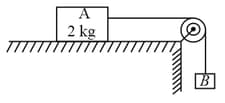
A horizontal force of is necessary to just hold a block stationary against a wall. The coefficient of friction between the block and the wall is . The weight of the block is
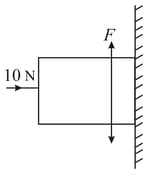
A block of mass is acted upon by a force at an angle with the horizontal in a downward direction as shown. The coefficient of friction between the block and the horizontal surface is . The friction force acting on the block by the ground is
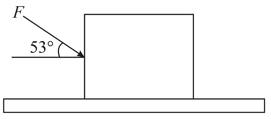
A block of mass lying on a rough horizontal plane is acted upon by a horizontal force and another force inclined at an angle to the vertical. The block will remain in equilibrium if the coefficient of friction between it and the surface is
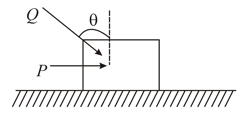
In the arrangement shown in the figure, block is placed on a rough table and a mass is connected at one end, then the range of mass for which the system will remain in equilibrium is
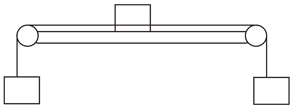
Two masses and of and , respectively, are connected with a string passing over a frictionless pulley fixed at the corner of a table as shown. The coefficient of static friction of with table is . The minimum mass of that may be placed on to prevent it from moving is,
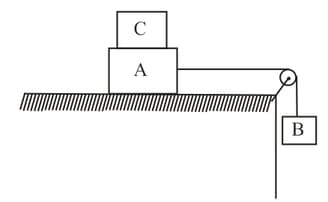
A block of mass is at rest relative to the stationary wedge of mass . The coefficient of friction between block and wedge is . The wedge is now pulled horizontally with acceleration as shown in the figure. Then the minimum magnitude of for the friction between block and wedge to be zero is
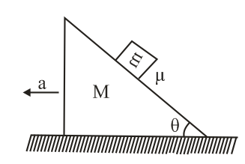
A uniform rope of length lies on a table. If the coefficient of friction is , then the maximum length of the part of this rope which can overhang from the edge of the table without sliding down is
